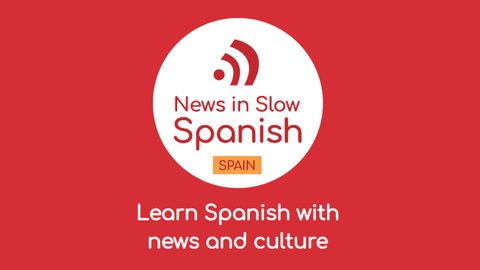News In Slow Spanish is an entertaining and unique way to learn the language. It's one of the best services we've tried, but comes with a few caveats. You need to be a little bit beyond beginner with Spanish to get started - though there is a novices course - but, once in, this is a great language course, and maybe the closest you can get to being in a Spanish speaking country. It's also expensive, as many of the best learn Spanish online courses are. However, we think you get great value for money, if you don't mind being thrown straight in at the deep end.
News In Slow Spanish review: Method
It’s all in the name with News In Slow Spanish. The mainstay of the course is the Spanish news (there are even two versions, one using Spanish as it's spoken in Spain and the other focusing on Latin American Spanish) but slowed down so the student can follow what’s going on.
Unlike many of the other language learning courses, Spanish or otherwise, News In Slow Spanish (the provider does other languages too) hasn’t just been designed by a couple of entrepreneurial academics: it’s a collective of writers, journalists, linguists and native speakers, with audio engineers and a host of technology experts to make it all happen online. The result is the closest you can get to an immersive language course without actually getting on a plane. What you get instead is a weekly podcast featuring a news item (in slowed-down Spanish), followed by two Spanish Presenters discussing the item you’ve just seen, in Spanish. But slowly, obviously.
A complete Spanish transcript is provided with highlighted phrases. If you hover your mouse over the highlight a contextual English translation is revealed (so you can reveal as much or as little as you want) leaving you, the student, to work out the rest. It's an incredibly effective way or learning Spanish, and gives you a great grounding in practical, modern Spanish that you can actually use in day-to-day conversation.
This is backed up by a host of educational resources and tools to make the course intuitive, interesting and entertaining. We’re not just talking about the obligatory Flashcards, quizzes and interactive lessons here - there is a stand-alone grammar course (intermediate to advanced), a catalogue of phrases, plus an entire library with hundreds of hours of immersive audio content. You get a lot for your money.
News In Slow Spanish has been designed for intermediate and above students but beginners (with a bit of Spanish knowledge) can get in the action too with a 'getting up to speed' (G.U.T.S) course: 25 lessons, the first five of which are free, that prepare you for what’s to come. The difference with these is that the highlighted parts of the text occur automatically, and the language is taught in Latin American Spanish. Once in the course proper, you're free to progress through three levels, beginner, intermediate and advanced, and sail out the other end as close to fluent as possible.
If you're in desperate need of some feedback on your process, you might be better served by one of the best online tutoring services. These one-on-one services allow you get direct feedback from a tutor, who can pick up on your mistakes and guide you on how to improve.

News In Slow Spanish review: Cost and app
There is a free, seven-day trial, which is very useful. In addition, there are also a bunch of samples on YouTube if you want to get a flavor of how the news clips actually work. The rest of the price plan is a simple, $22.90 billed monthly, irrespective of level. This makes News In Slow more expensive than other programs, like Rosetta Stone, but we think it's more effective for mid-level learners. What we'd recommend is - if you like the sound of News In Slow, but worry you don't know any Spanish, then download a free app like Duolingo, get the basics sorted, and then subscribe to this as an intermediate.
The app, which is available on iOS and Android, is functional but not particularly well designed. It suffers from crashes, and many find the experience to be sub-optimal on the app. Better to stick to desktop if you can.
Should you try News In Slow Spanish?
The core of News in Slow Spanish is very simple: listen to native speakers and learning the language as it is, not from books or programmes, but how it's actually spoken in the real world. The really clever aspect is that the raw material comes from the news, so by default, the Spanish will have to be ‘understandable’ to a wide variety of native speakers and, because it’s the news, grammatically correct. And (because it’s the news) there is a level of interest and usefulness that goes far beyond what traditional learning softwares offer.
The downside is that the course is expensive, the app isn't the best, and if you're a beginner you will struggle to get started. As a method, though, it's great and the sheer volume of content available makes this good value for those who are very serious about learning Spanish.

